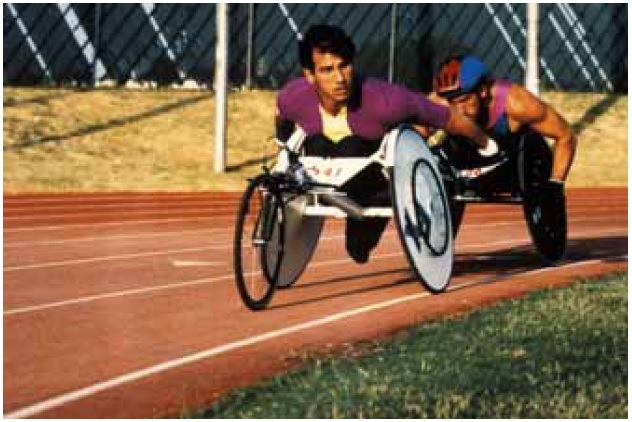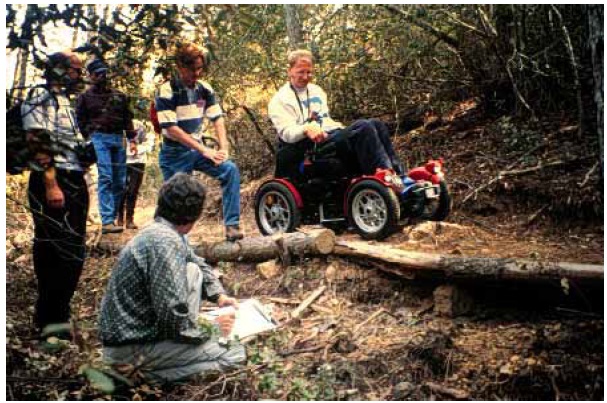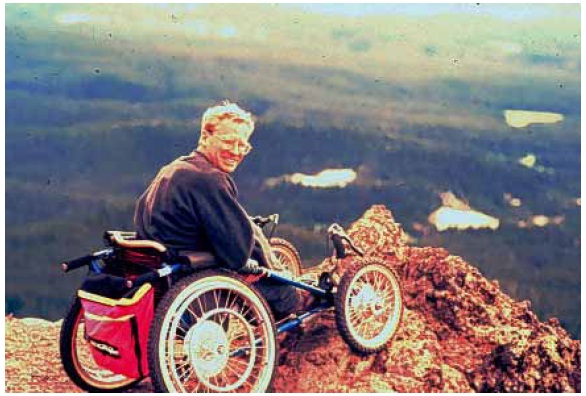Racing Wheelchairs

(Photo by Peter Axelson.)
Figure 13. Racing wheelchairs.
Racing wheelchairs are specially modified manual wheelchairs that are designed to maximize their performance in specific activities. They are typically used by competitive athletes for training as well as competition and may be used on road or shared use path surfaces (figure 13). Given the amount of training time dedicated to a particular activity, individuals are usually very experienced and skilled in the use of a racing wheelchair.
Road Racing Wheelchairs
Road racing wheelchairs typically have a long wheelbase and fixed (nonsteerable) front wheels. The wheels consist of two large (approximately 700 mm (27.5 inches)) rear wheels with push rims for propulsion and braking. Most chairs also have hand brakes to assist in stopping at high speeds. A steering mechanism compensates for the crown of the road so that the athlete can push equally with both arms. Racers, even during training, will usually be traveling at a relatively high speed, particularly on downhill sections. Typically, a low seating position is preferred to increase stability and decrease resistance. The low seating position also reduces the user's visibility by other road and shared use path users. Road racing wheelchairs are usually finely tuned for balance and use by one specific individual.
Off-Road Racing Wheelchairs

(Photo by Peter Axelson.)
Figure 14. Off-road racing wheelchair.

(Photo by Peter Axelson.)
Figure 15. Another off-road racing wheelchair.
Off-road racing wheelchairs typically are designed for recreational use on mountain bike or single-track trails (figures 14 and 15). They typically have all-terrain tires on four wheels with varying sizes from 400 mm to 650 mm (16 inches to 26 inches). They often utilize a more rugged frame, incorporate a suspension system, and provide four-wheel braking systems actuated by hand brake levers. If used, gearing is accomplished through multiple push rims. A long and wide wheelbase with camber on the rear wheels is used to increase stability on a variety of terrains. Although they provide much more stability and control when traveling downhill (e.g., can be driven down a flight of stairs), they can be heavy and cumbersome for movement on level ground or going uphill. These devices are used infrequently on public roads and shared use paths, and were therefore beyond the scope of this study.

User Comments/Questions
Add Comment/Question